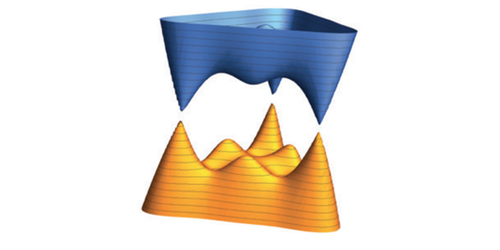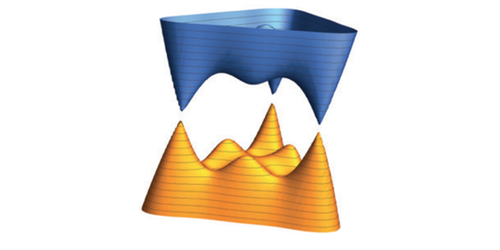Additional Peaks in Graphene’s Band Structure
Graphene is a finicky material. Defects in its hexagonal carbon lattice or stray charges in its environment can smear out attractive features in the material’s electronic band structure. These features include Dirac cones, peaks in the band structure, that are associated with graphene’s high charge mobility. The oxide-coated metal contacts—known as gates—typically used to apply an electric field to graphene also degrade these features. Now a team led by Andrea Young at the University of California in Santa Barbara has created a high-quality graphene device using graphite gates and pristine trilayer graphene flakes. The graphite gates remove inhomogeneities from the system’s electric potential that oxide-coated metal gates introduce, creating a “cleaner” device. The team observe new features in the band structures of trilayer graphene, including the emergence of three additional Dirac cones when the trilayer is subjected to a high electric field.
The team applied electric and magnetic fields to the trilayer and tracked changes in its band structure via capacitance measurements. In the absence of either field, the trilayer’s electronic band structure resembled a sum of the structures found for mono- and bilayer graphene. Increasing the strength of the electric field, the team observed a warping of the band structure, such that it developed three additional Dirac cones. Applying a magnetic field, they then found that near these Dirac cones, the number of overlapping electron energy levels—so-called Landau levels—in the device changed from two to three. The team says that these new features indicate both enhanced interactions among the electrons that lead to the emergence of new electronic states in graphene.
This research is published in Physical Review Letters.
–Katherine Wright
Katherine Wright is a Senior Editor of Physics.





